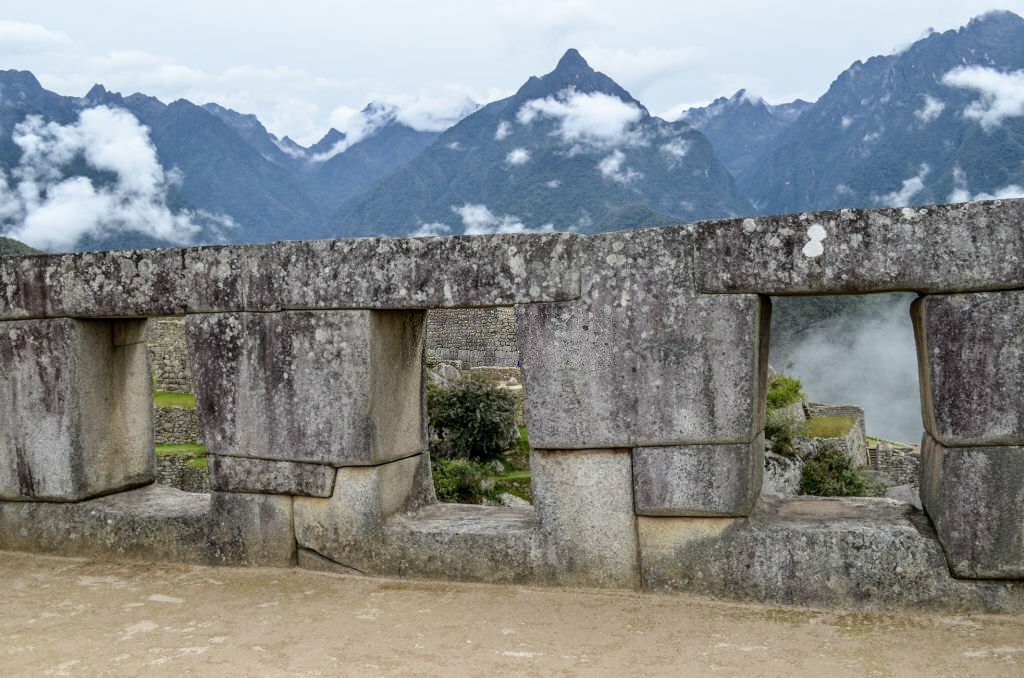High above the mystical city of Machu Picchu, perched on a terraced platform, lies a structure that stands as a testament to the architectural ingenuity and spiritual significance of the Inca civilization—the Temple of the Three Windows. This ancient sanctuary, surrounded by the awe-inspiring beauty of the Andean mountains, offers a glimpse into the sophisticated craftsmanship and cosmic reverence that defined the Inca approach to architecture and spirituality.
1. Location and Significance:
Situated in the heart of Machu Picchu, the Temple of the Three Windows commands a central position within the urban complex. It is strategically located at the northern end of the Main Plaza, overlooking the vast expanse of the Sacred Valley. This prime location underscores the temple’s ceremonial and symbolic importance in the Inca city.
2. Architectural Marvel:
The Temple of the Three Windows is a prime example of Inca masonry, characterized by precisely cut stones that fit seamlessly together without the use of mortar. The structure consists of three trapezoidal windows carved into a massive stone wall, each adorned with a stone lintel. The mastery of Inca stonework is evident in the perfect alignment of the stones and the overall harmony of the structure.
3. Symbolism and Spiritual Significance:
The three windows of the temple are more than architectural features; they carry profound symbolic and spiritual meaning. In Inca cosmology, the number three held great significance, representing the trilogy of the Andean worldview—Hanan Pacha (the upper world), Kay Pacha (the world of the living), and Uku Pacha (the inner world or underworld). The Temple of the Three Windows is thought to be a place where rituals, ceremonies, and astronomical observations took place in connection with these cosmic realms.
4. Cosmic Alignment:
One of the remarkable aspects of the Temple of the Three Windows is its alignment with celestial phenomena. During the June solstice, the rising sun casts its first rays directly through the central window, illuminating the interior of the temple. This celestial alignment is believed to have held spiritual significance for the Inca, marking key moments in the agricultural calendar and reinforcing their connection with the divine.
5. Integration with Nature:
The Temple of the Three Windows is not an isolated structure but rather an integral part of Machu Picchu’s overall design. It interacts harmoniously with the natural landscape, offering breathtaking views of the surrounding mountains, including the iconic Huayna Picchu. The integration of architecture and nature reflects the Inca belief in the sacred interconnectedness of all things.
6. Preservation Challenges:
While the Temple of the Three Windows has withstood the test of time, it faces challenges related to preservation. The site’s popularity as a tourist destination, coupled with environmental factors, has led to wear and tear on the stone surfaces. Conservation efforts are ongoing to protect and maintain the structural integrity of this ancient marvel for future generations.
7. Visitor Experience:
For modern-day visitors to Machu Picchu, the Temple of the Three Windows offers a captivating opportunity to step back in time and connect with the spiritual legacy of the Inca civilization. Exploring the temple allows one to appreciate the precision of Inca craftsmanship, marvel at the celestial alignments, and absorb the energy of this sacred space.
8. A Window into the Past:
The Temple of the Three Windows invites us to peer through the windows of history and gain insights into the profound beliefs and architectural brilliance of the Inca. As we stand in the presence of this ancient structure, we are afforded a glimpse into a civilization that revered the cosmos, revered the earth, and left an indelible mark on the cultural landscape of the Andes.
In conclusion, the Temple of the Three Windows at Machu Picchu stands as a poignant reminder of the Inca’s reverence for the cosmos and their extraordinary architectural prowess. Its trinity of windows serves as a portal to the spiritual dimensions that shaped Inca life, making it a destination of both historical significance and timeless beauty.
Book your ticket here.










Comment (0)